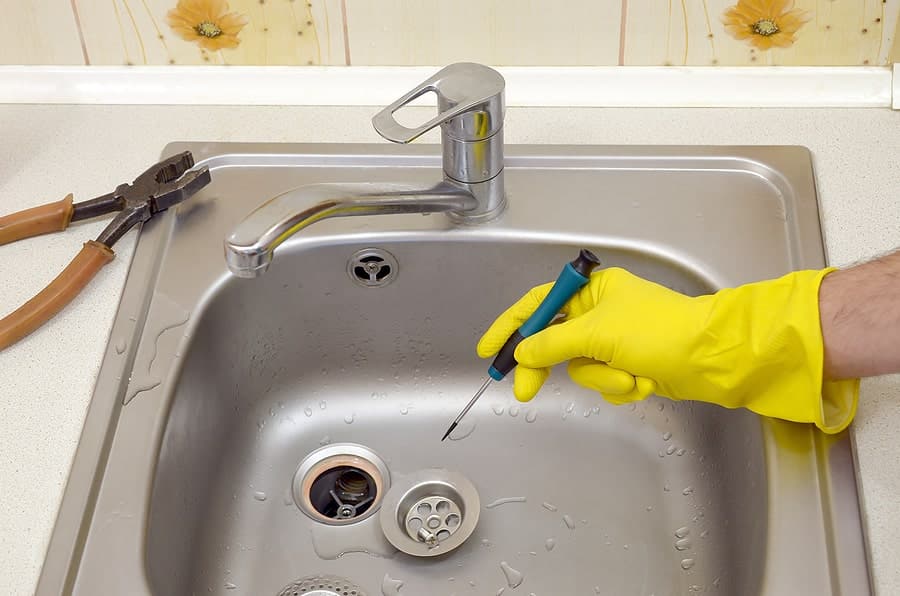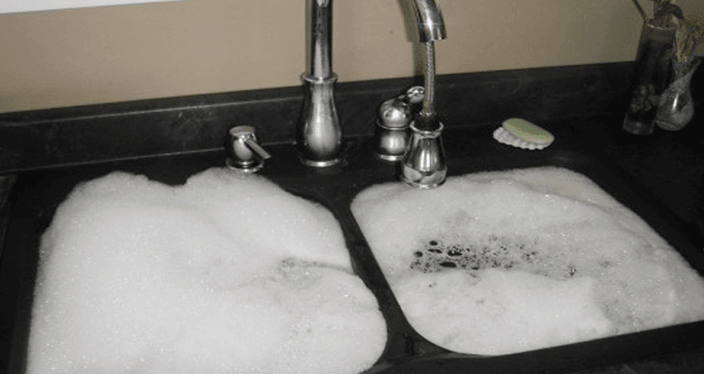Waterlogged And Wondering Why - 6 Causes For Your Kitchen Sink's Slow Drain
Waterlogged And Wondering Why - 6 Causes For Your Kitchen Sink's Slow Drain
Blog Article
This post down below about Why Is My Sink Not Draining? is truly intriguing. Have a go and make your own personal ideas.

It's not typical for your cooking area sink to clog up numerous times in one month. If your sink blocks twice a week, there's some difficulty taking place.
A blocked kitchen area drainpipe does not simply slow down your tasks, it deteriorates your whole plumbing system, gradually. Here are some usual habits that encourage sink blockages, and exactly how to avoid them.
You need appropriate waste disposal
Recycling waste is terrific, but do you take note of your organic waste too? Your kitchen ought to have two different waste boxes; one for recyclable plastics and also an additional for natural waste, which can end up being compost.
Having a designated trash bag will aid you and also your family members stay clear of tossing pasta as well as other food remnants down the drain. Generally, these remnants soak up dampness and also end up being blockages.
The fault isn't from your kitchen sink at all
Maybe the issue isn't from your cooking area sink, yet the entire drain system. In such a case, you might observe that other sinks and drains pipes obtain blocked every other week. You need a professional plumbing service to repair this.
You're throwing coffee down the tubes
Used coffee premises as well as coffee beans still absorb a substantial quantity of wetness. They may appear little sufficient to throw down the drain, yet as time takes place they begin to swell and also use up even more area.
Your coffee premises ought to enter into organic garbage disposal. Whatever fraction runs away (possibly while you're depleting) will be cared for during your month-to-month cleanup.
You have actually been eating a great deal of greasy foods
Your cooking area sink may still get obstructed even with natural waste disposal. This might be because you have a diet plan abundant in greasy foods like cheeseburgers.
This oil coats the within pipes, making them narrower as well as even more clog-prone.
Use a bettor
Your pipeline wasn't repaired appropriately in the first place
If you have actually been doing none of the above, yet still get regular blockages in your cooking area sink, you ought to call a plumber. There could be a trouble with exactly how your pipelines were installed.
While your plumber arrives, check for any type of leaks or irregularities around your cooking area pipelines. Do not attempt to take care of the pipes yourself. This might cause an accident or a kitchen area flooding.
Someone attempted to clean their hair in the kitchen sink
There's a correct time and location for every little thing. The kitchen sink is just not the ideal place to wash your hair. Washing your hair in the cooking area sink will make it block one way or another unless you use a drain catcher.
While a drainpipe catcher could catch the majority of the results, some hairs may still make it through. If you have thick hair, this may suffice to reduce your drainage as well as eventually form a blockage.
There's even more dirt than your pipes can take care of
If you get fruits directly from a ranch, you might notice more kitchen dust than other individuals that shop from a shopping center. You can quickly repair this by cleaning the fruits as well as veggies appropriately prior to bringing them right into the house.You need correct garbage disposal
My Kitchen Sink Won’t Drain - What Should I Do?
If Your Sink Has a Garbage Disposal...
Turn on the disposal. If the disposal hums and doesn’t turn, then there’s clog in the disposal unit.
Go to your circuit breaker panel, and switch off the circuit breaker to your garbage disposal.
Back in your kitchen, double-check that your garbage disposal is off by trying to turn it on. The disposal should not move, and it should not make any noise.
Lie down underneath your sink so that you can see and access the bottom of the disposal unit. Look for a hole that looks like the head of a hex-head bolt in the center of the unit.
Place an Allen wrench inside this hole and turn it from side to side until you feel a decrease in resistance and are able to rotate the wrench completely in a single direction. This action rotates your disposal’s blade manually.
Put the wrench aside, and press the disposal unit’s reset button or switch.
Flip your garbage disposal’s circuit breaker switch back on, and turn on the unit to see if the obstruction has cleared. If it hasn’t, repeat the steps above until the obstruction is removed.
How to Unclog a Kitchen Sink Drain
If you have a double bowl sink, seal one side of the sink with an airtight lid or a second plunger before plunging the other side. Otherwise, you won’t be able to create adequate suction.
Place the cup of the plunger completely over the drain opening.
Turn on the faucet, and let the water run until it completely covers the cup of the plunger.
Start plunging by pushing the plunger down and pulling up again in order to build up suction. Make sure that the edges of the plunger stay in contact with your sink, or else you’ll lose the suction.
If you have trouble forming a seal between your sink and plunger, add petroleum jelly to the mouth of your plunger, and try again.
Plunge about five or six times before removing the plunger to see if water starts to drain properly. In some cases, you’ll even be able to feel the clog become dislodged while you plunge because suddenly there will be much less resistance. Repeat the plunging process until the clog clears.
Once water is draining properly again, run hot water down the drain for 5 minutes to help clear away grease, grime, and debris from the clog. https://www.plumbingjoint.com/blog/2019/august/my-kitchen-sink-won-t-drain-what-should-i-do-/

My Kitchen Sink Won’t Drain - What Should I Do?
If Your Sink Has a Garbage Disposal...
How to Unclog a Kitchen Sink Drain
https://www.plumbingjoint.com/blog/2019/august/my-kitchen-sink-won-t-drain-what-should-i-do-/
I ran across that blog posting on Easy Ways to Unclog Any Drain in Your Home while doing a search on the web. So long as you enjoyed our post kindly remember to share it. Thanks a lot for going through it.
Click Here To Read More
Report this page